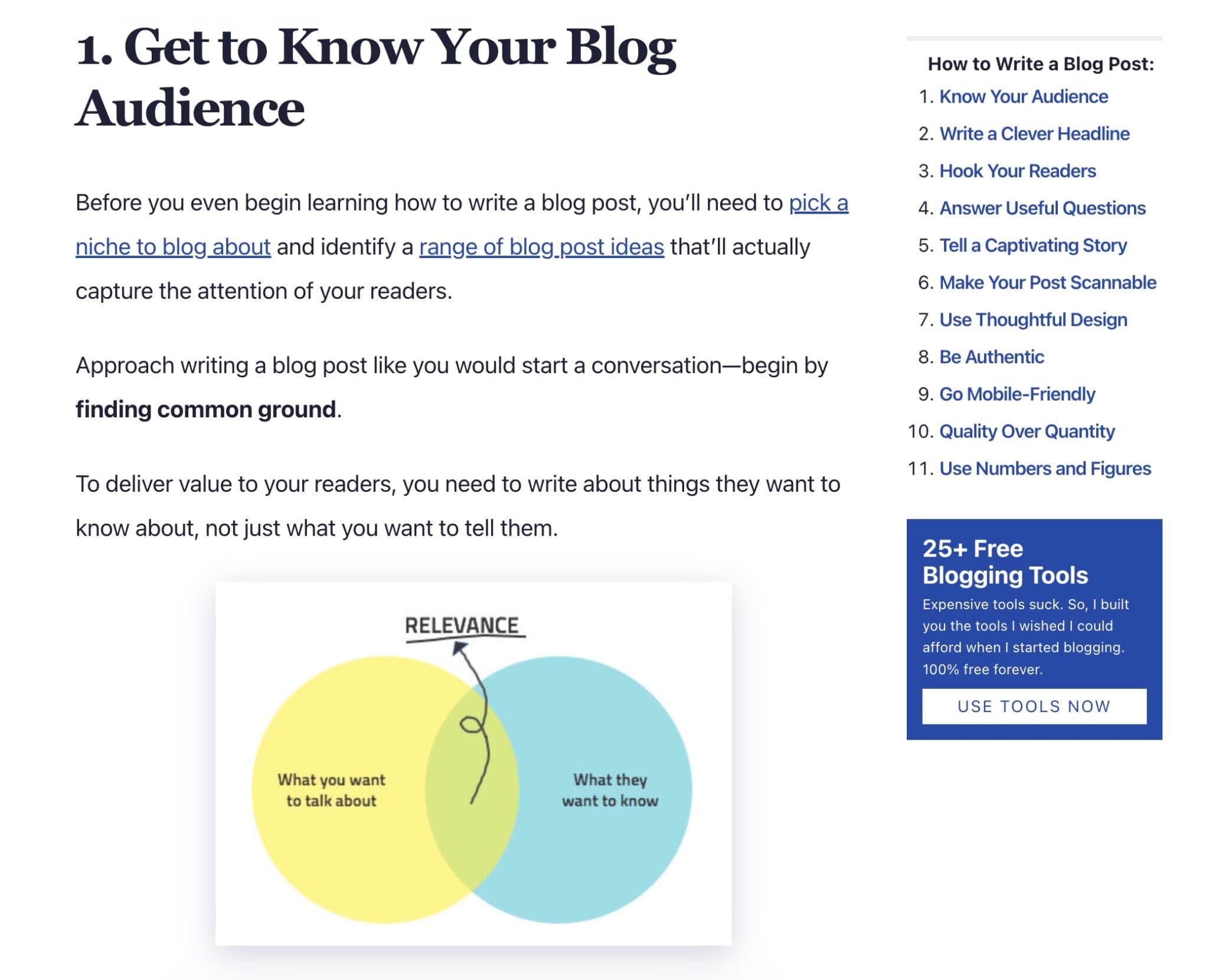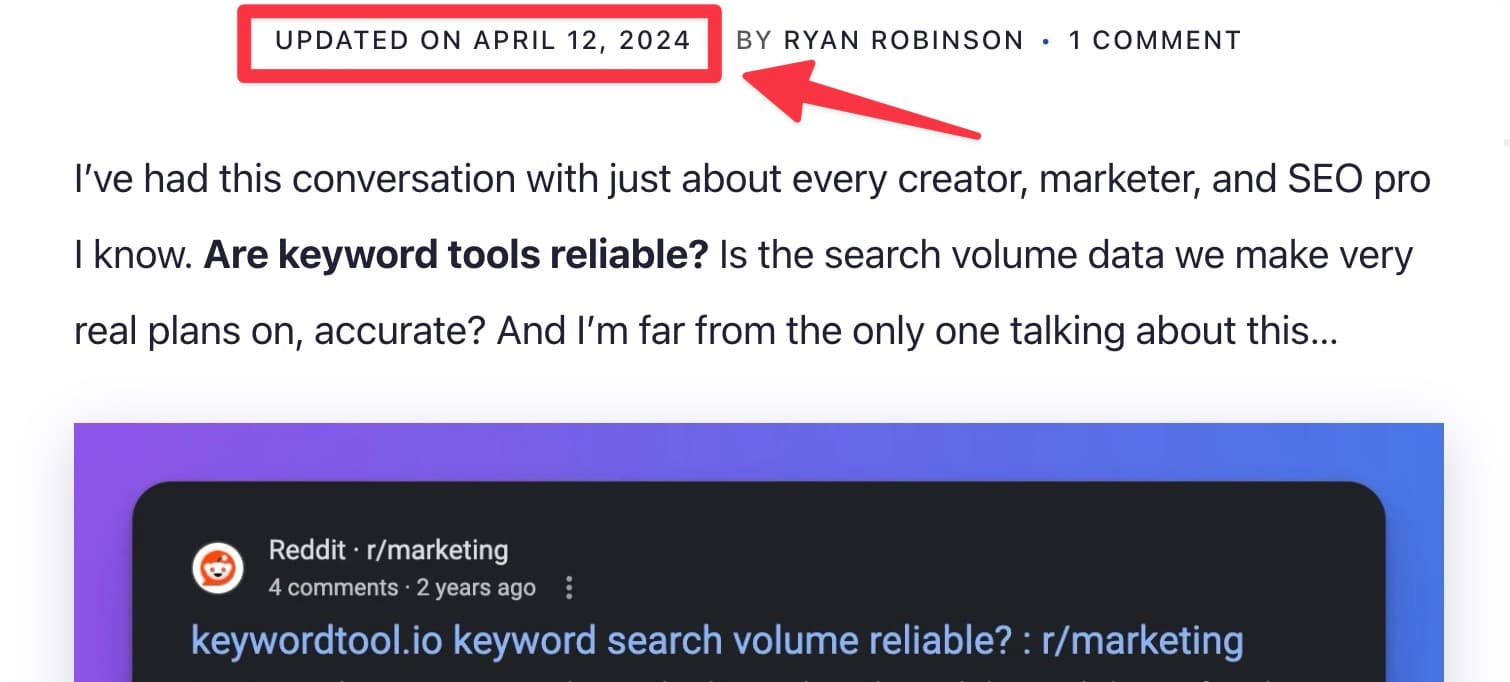5 Blogging Mistakes That Could Be Hurting Your Traffic

As veteran bloggers with more than a decade of experience each, Andy & I have seen (and made) just about all the blogging mistakes you can imagine. We’ve learned what works, and what doesn’t. And we’ve seen several common pitfalls that most bloggers often fall into.
It’s easy to overlook the seemingly small stuff when you’re wearing many hats in your business, but these subtle forced errors are a bigger deal than most realize, and they’re easily corrected. Getting them right can significantly improve your blog’s performance over time.
In today’s video & guide, we’re breaking down the most common blog writing mistakes that are low key sabotaging your chances of growth—not just to highlight what might be going wrong, but to offer practical solutions so you can better attract and connect with your audience.
Blogging is already hard enough, the last thing you need is to be making mistakes you don’t even know you’re making. Let’s dive in.
1. Lengthy, Meandering Introductions
Your blog post’s introduction should be a hook that draws in readers and clearly signals what they’ll learn, gain, or achieve from your post. It needs to immediately match the intent of your readers—so that you’re meeting them where they’re at, as soon as they arrive on your article.
A lengthy, meandering intro can cause potential readers to lose interest before they’ve even reached the meat of your content.
Here are a few actionable ways to keep your introductions brief and impactful:
- State Key Takeaways Early: Let readers know immediately what they’ll learn by inserting a “key takeaways” section near the top of your content.
- Highlight Text: Using bold or colored background text can help important information visually stand out.
- Leverage Block Editor Features: If you’re using WordPress, utilize formatting tools that include the ability to embed videos, images, list formatting and other eye-catching sections that can create more engaging introductions (and help you land a Google featured snippet).
2. Overusing Generic Stock Images
While it’s tempting to fill your blog posts with (easy to find) generic stock photos from sites like Unsplash and Pexels, these images often don’t resonate as well as original graphics or images of you & your team.

Photos taken from your real life experiences add a personal touch and credibility to your story. Plus, readers will feel more of a connection to you—the person behind the content—which goes a long ways towards building relationships with your readers.
Here’s how you can integrate more authentic visuals into your content:
- Capture the Fun Moments: For example, if you’re a food blogger that’s writing about a favorite new recipe you just whipped up, include photos you’ve taken during the creation process.
- Relate to Your Niche: If your blog is about hiking, share images from your hikes. If you’re in the personal finance space, take an afternoon with a friend that can shoot some photos of you working at your computer, using a calculator, and drawing charts on graphing paper. These kinds of authentic photos will connect much more deeply with your audience.
- Video is King: If you have the skills and drive to create a video that’s related to the topic of your blog post, pairing video with written content is one of the best ways to not only connect deeper with your audience, but add a new discovery channel into the mix—with YouTube or the several short-form video platforms where people spend big chunks of time today.
3. Long Paragraphs are Your Worst Enemy
One of the most common blogging mistakes I see, is the repeated use of long, daunting paragraphs. Readability & skimmability are incredibly important today.

Think about how you consume content today. Most readers (like you) are short on time, skimming content, looking for the key points that interest them or the answer to the question they’re seeking clarity on. Large blocks of text can be overwhelming, and often cause readers to bounce early.
Your paragraphs should usually be no more than 3-4 lines in height on desktop. Shorter is even better, especially towards the beginning of your posts.
Here’s how to improve your blog posts for readability:
- Use Lists: Bullet points or numbered lists can break information into manageable chunks that visually stand out and feel more approachable.
- Incorporate Images: Visuals not only add aesthetic value, but also break the monotony of giant walls of text.
- Embrace Formatting: Simple formatting like adding bold and italics bits can highlight important information, better guiding readers through your posts.
By keeping your paragraphs short and sweet, you’re not only catering to the skimming habits of real people, but you’re also improving the overall user experience on your blog.
4. Don’t Neglect Old Blog Posts (Update Content Often)
Updating old blog posts is a strategy most bloggers overlook, but it’s actually one of the most effective ways to generate massive long-term traffic.

Revisiting and refreshing the content you wrote or last touched 6-12 months ago, can significantly boost your content’s SEO rankings, in addition to the obvious benefits of keeping your information relevant and current for readers.
Important tips for updating old content:
- Add Recent Information: Keeping content up-to-date ensures relevance and maintains reader trust.
- Increase Contextual Depth: More context that’s added over time as your knowledge increases, will dramatically improve the quality and depth of your blog content.
- Update Publication Dates: If you’ve made meaningful updates to a blog post, make sure the post reflects the most recent date it was updated, to better communicate the freshness of the content (to both readers and Google). Most good WordPress themes now come with this option built-in.
5. Be Clear and Specific in Your Headlines & Headings
Vague headlines and headings can lead to readers leaving long before they get any value from your blog posts. Your titles and headings need to be clear and precise, accurately reflecting the nature of the content you’re sharing.
To improve your headlines and headings:
- Match User-Intent: Make sure your headline clearly states the problem you’re solving, the process you’re teaching, or the value you’re offering.
- Use Descriptive Subheadings: These subsections within your blog posts not only guide your readers through the article in a narrative fashion, they also improve the skimmability factor, by clearly outlining each section’s focus. Just be sure you’re being very specific with your subheadings.
Avoiding These Blogging Mistakes Will Help You Get More Traffic
The journey to becoming a successful with blogging, is filled with a loooooot of learning and growth. Not all of it will feel easy, but it’s important to your personal evolution if you want your blog to eventually drive meaningful results.

Recognizing and avoiding these blogging mistakes can dramatically improve your blog’s growth and reach over time. Whether it’s refining your writing style, enhancing your visual strategy, or updating your older posts, each step you take is a move towards a more successful blog.
So, I wanna invite you to review one of your recent blog posts today, and consider what kinds of tweaks could help it improve.
Seemingly small changes can lead to a significant impact.
How long should my blog post introduction be to keep people reading?
Keep your introduction short and clear so readers know they are in the right place.
Aim for 3 to 6 sentences that quickly say what the post will help them do. Then get into the first useful step or tip.
If you need to add context, move it into a later section. You can also add a quick “key takeaways” list near the top so skimmers can see the value fast.
Are stock photos really hurting my blog traffic and trust?
Generic stock photos can make your post feel less personal, which can lower trust and keep people from staying on the page.
Try swapping in a few real photos, screenshots, or simple custom graphics. Even one photo of you working, your process, or your results can help readers connect.
If you can, add a short video that matches the post topic. Video can boost time on page and give you another way to get discovered through search and social.
What is the best paragraph length for blog posts (and why does it matter for SEO)?
Short paragraphs are easier to read, which helps people stay longer and find what they need.
A good rule is 2 to 4 sentences per paragraph, or about 3 to 4 lines on desktop. Keep the first few paragraphs even shorter.
Break up text with bullet lists, bold key phrases, and helpful images. This improves skimming and can reduce bounce rate, which is good for overall performance.
How often should I update old blog posts to get more traffic?
Update older posts every 6 to 12 months, or sooner if the topic changes fast.
Start with posts that already get some traffic, rank on page 2 or 3, or have outdated facts and screenshots. Small updates can lead to big ranking gains over time.
Refresh examples, add new sections, improve headings, and update the “last updated” date if the changes are meaningful. If you want a structured way to spot what to fix, use an SEO content report workflow to guide your updates.
How can RightBlogger help me fix these blogging mistakes faster?
RightBlogger can speed up the parts of blogging that usually slow you down, like planning, rewriting, and on-page SEO.
Use the Blog Outline Creator to plan clear headings and avoid vague sections. Then rewrite long, hard-to-read blocks with the Content Rewriter to make paragraphs shorter and more skimmable.
When you are updating older posts, pair those edits with a quick SEO check so your improvements are easier for Google to understand. This helps you publish cleaner, clearer posts without spending all day editing.
Article by Ryan Robinson
RightBlogger Co-Founder, Ryan Robinson teaches 500,000 monthly readers how to grow online. He is a recovering side project addict.
New:Autoblogging + Scheduling
Automated SEO Blog Posts That Work
Try RightBlogger for free, we know you'll love it.
- No Card Required
- Blog Posts in One Click
- Unlimited Usage





Leave a comment
You must be logged in to comment.
Loading comments...